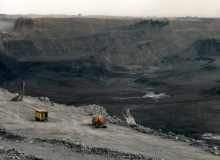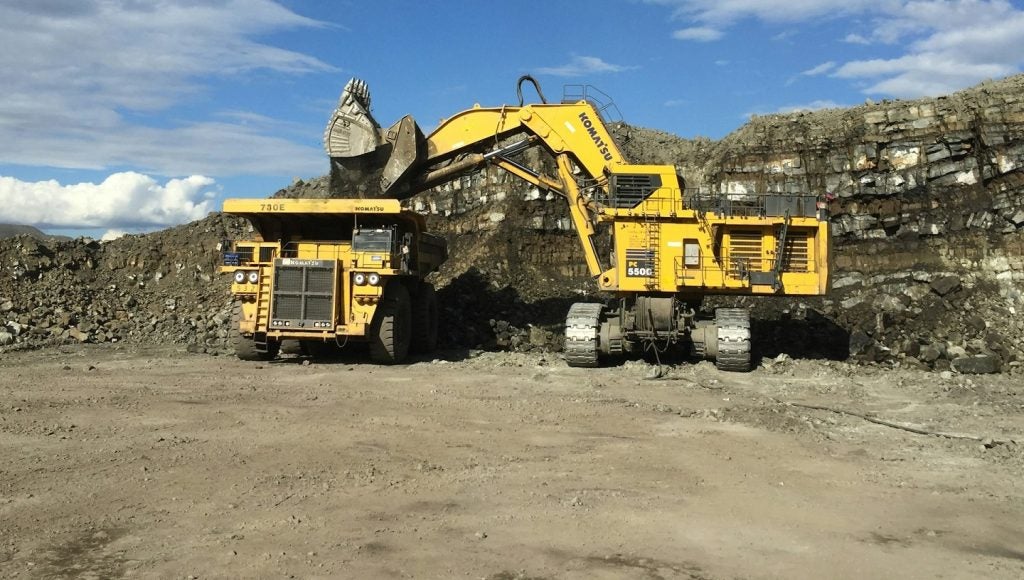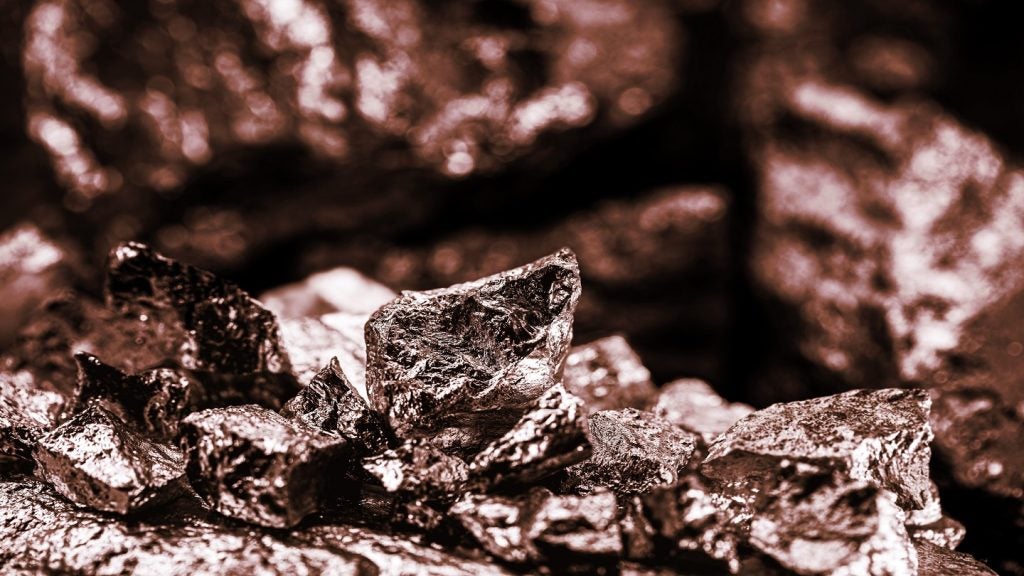
The Gobi desert is one of the most remote places in the world. With its harsh winters and hot and dry summers, this area in south Mongolia was until recently one of the last unexplored wastelands on the planet.
Today however it is the epicentre of the greatest resource and mining boom in years – giving it the nickname of ‘the last frontier’ and ‘Minegolia’.
Over the next five to ten years Mongolia is set to produce a world-class mining industry that could compete with Chile and Brazil. The first mega-mine to be developed was the vast opencast pit at Tavan Tolgoi, with six billion tons of coal waiting to be extracted. Other mega-mines are following, with the boom likely to triple the domestic economy by 2020, driving living standards of the small 2.75 million population into the worldwide middle class.
Along with the resource boom comes the need for equipment that is able to withstand the ruthless environment and harsh climate.
The extreme remote nature of the desert calls for high-tech positioning and surveying tools to unlock the vast desert, and data management and communication is also difficult.
See Also:
In addition, attracting skilled and experienced workers to the country is challenging, but might give the sector the needed push toward more autonomous mines.
How well do you really know your competitors?
Access the most comprehensive Company Profiles on the market, powered by GlobalData. Save hours of research. Gain competitive edge.

Thank you!
Your download email will arrive shortly
Not ready to buy yet? Download a free sample
We are confident about the unique quality of our Company Profiles. However, we want you to make the most beneficial decision for your business, so we offer a free sample that you can download by submitting the below form
By GlobalDataGobi: the new frontier
Up until recently, Mongolia had been cautious about developing its huge but untapped coal, copper, gold and uranium reserves. It was in the early 2000s when the government opened up the market, allowing foreign companies and investors into the country in order to provide jobs and education to its people.
The new ‘gold rush’ could make the country the world’s fastest-growing economy in the next few years. Investment bank Renaissance Capital projected its GDP to grow from $6bn in 2010 to $23bn by 2013.
Mining software company Gemcom has worked in Mongolia since its beginnings. Its director of operations Asia Simon Waghorn explained: "The boost that has occurred over recent years has really been driven by significant investment and world demand for Mongolia’s resources."
In February 2011, Gemcom then opened its first office in the capital Ulaanbaatar. Waghorn said: "The decision to make a direct investment was made in light of growing evidence that the Mongolian market, although still emerging, had gained sufficient mass to be considered self-sustaining."
Today, more than ten strategically important deposits are in development, including the Dornod uranium deposits, the Asgat silver deposit, as well as the colossal Tavan Tolgoi coal mine, which will be operated by the Russian-led consortium Peabody Energy and a joint venture between Chinese firms Shenhua and Mitsui.
Another massive mine development is the Oyu Tolgoi gold, copper and silver mine, currently developed by Ivanhoe and Rio Tinto, which is expected to produce 450,000t of copper and more than 300,000 ounces of gold.
Exploration challenges
One reason why Mongolia is only now opening up to mining has been the enormous technological progress made in the exploration of remote areas. The use of geographical information systems (GIS), combined with satellite imaging and 3D visualisation programmes for instance, has greatly enhanced mineral discovery in even cut off areas.
What will further improve the exploration of such remote areas in the future, are robotic systems and unmanned drones, which even can make the most isolated areas accessible. In early 2011, 3D Mine Surveying International (3D msi) introduced a remote surveying vehicle (RSV), able to conduct 3-dimensional surveys at a far greater rate than through standard surveying methods.
Employed in dangerous and remote environments it collects data in a surrounding of 1.5km a day, which can then be remotely accessed and processed from anywhere in the world.
Leica Geosystems’ introduced a new robotic imaging total station in October 2011. The Leica Viva TS15 features image-assisted surveying and documentation, tracking and uses software that allows quick and precise surveying.
The surveyor can work directly on the produced 3D design and add measurement data onto the layout.
Advances have also been made in the development of unmanned aerial vehicles (UAVs) for mineral exploration. They are capable of long-distance flights at a low altitude and airspeed, which makes them ideal for image and data collection in areas humans cannot access.
The technology would offer a tremendously efficient way to explore remote areas, but issues of safety and standardisation have still to be addressed.
Remoteness – chance for autonomy?
The remote nature of the Gobi desert and the difficulty to find skilled people coming to the country might give reason to encourage the implementation of semiautonomous and autonomous equipment in the industry.
According to Simon Waghorn, finding sufficiently skilled people is a problem in Mongolia like everywhere else in the sector. The creation of completely autonomous and remotely operated mines might therefore be indispensable for the sector.
Mining equipment giant Caterpillar, for instance, has been focussing on autonomy as the way forward for some years now, working toward the trend of having fewer people on mines.
"Some mining areas are not the easiest to get to," said Caterpillar Global Mining group president of resource industries Steve Wunning at a press briefing in August 2011 in Milwaukee, US.
"They are located in some of the hardest locations to get to on the planet. Autonomy can help them [companies] to solve the human resource issue with finding operators that are willing to work in those environments."
In addition, Rio Tinto works with its Mine of the Future programme to demonstrate the improvement of mining processes to "unprecedented levels in automation" and "remote operations that will revolutionise the way mining is conducted."
As part of reaching this goal, the company will use a semiautonomous and later autonomous underground block cave mining method at the Oyu Tolgoi mine in Mongolia – as a first step to complete remote control.
Communicating in the desert
The remoteness of Mongolia is not only a challenge to mineral exploration and human resources but also to the communication systems used in a mine.
Internet connection and wireless signals are often weak or non-existent. Even though internet use has grown sharply in recent years, connection does often not go beyond city borders into the sparsely populated countryside.
According to Gemcom’s Simon Waghorn, remoteness is an intrinsic characteristic of mining and to overcome data management issues, the company introduced Gemcom Hub earlier in 2011. The system provides centralised and secure data management for exploration and production, delivering information over intermittent, low-bandwidth connections.
"Our Mongolian clients instantly saw the value in the ability to manage data over what are sometimes weak communication systems and as such Mongolia was the first country anywhere in the world to deploy Hub," Waghorn said.
"Through Hub, our clients are able to manage their data centrally no matter where it is generated or used."
The biggest benefit of the technology is that it requires minimal IT support despite its high-tech technology. According to Gemcom, Hub also achieves a significant return on investment through better allocation of company resources, including less travel to and from the mine site and improved use of staff who can work on multiple projects from one location.
The global need for minerals has pushed Mongolia’s once wild desert in the eye of the industry, with the era of isolation rapidly coming to an end.
Its remoteness has challenged the development of high-tech equipment, opening its way to the global mining scene, as Waghorn said: "The Mongolian mining industry has come a long way in recent years. It is very much part of the global mining industry now and its needs are moving in-line with the international trends."





